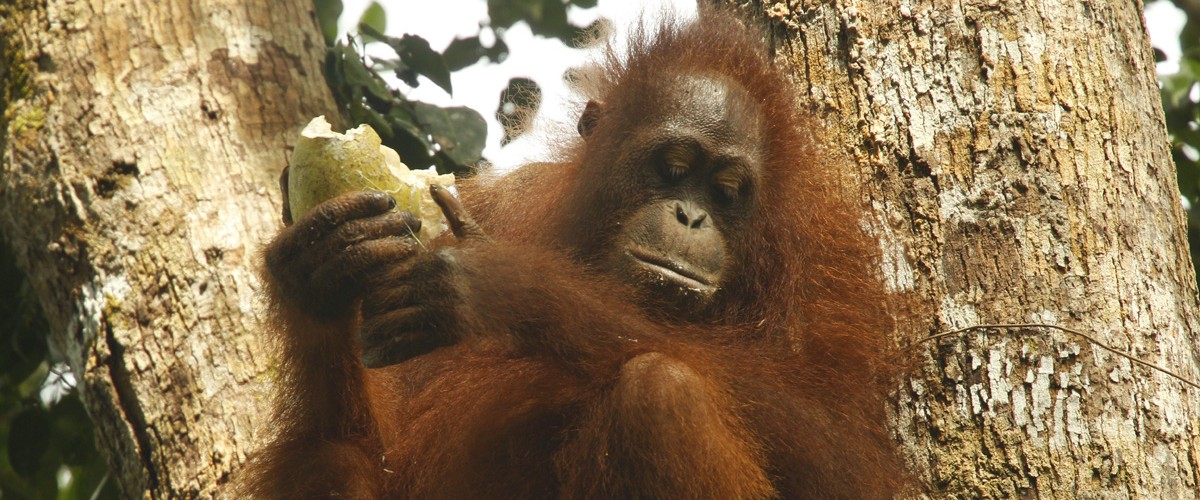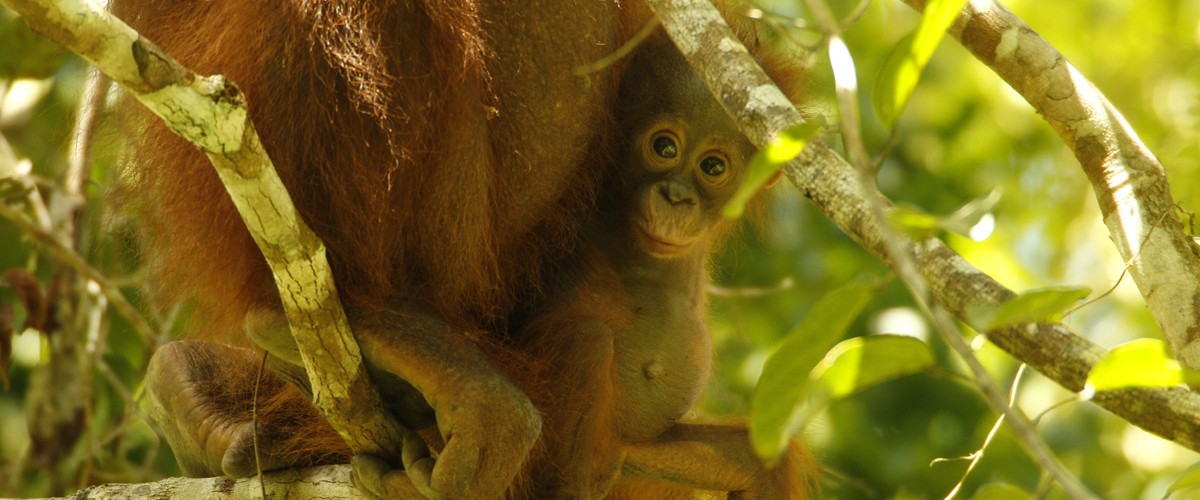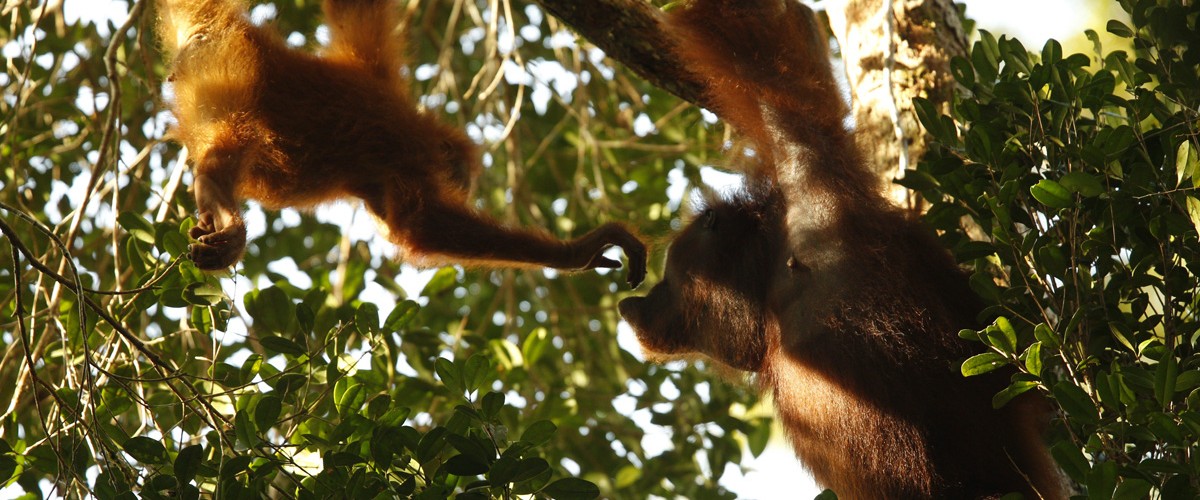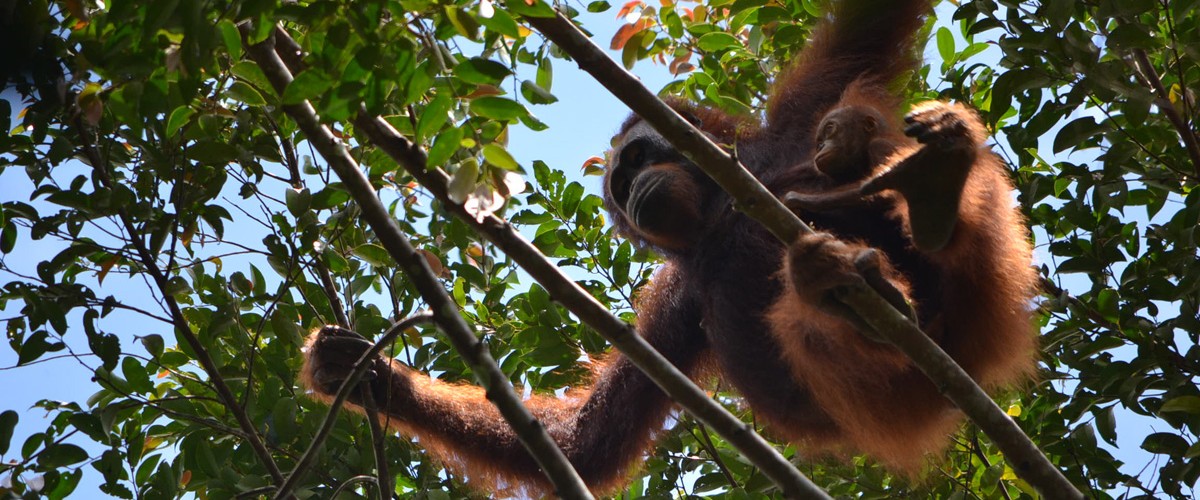By Cassie Freund, Program Director
Disseminating information about orangutans, the rainforest, and other environmental issues through radio broadcasts has been in GPOCP’s repertoire of conservation activities for almost 17 years. During that time, we have reached an estimated 400,000 people per month, broadcasting thousands of talk shows and radio commercials promoting the conservation of the Gunung Palung National Park landscape across three different stations. When we first began this program, radio was the main medium through which people in Indonesia received their news. There were no smart phones, no internet access, and only the wealthiest few owned television sets. Radio was the most efficient way of reaching hundreds of thousands of people at once. Today, with the introduction of modern technologies to even the most remote communities, things have changed a bit. GPOCP has adapted as well – our social media program is growing rapidly and we routinely publish news stories in online newspapers. However, despite these new technologies, radio still remains popular in Indonesia, and thus we find this to be an effective conservation campaign method. To further increase our impact, beginning last month, we initiated several new efforts to improve and evaluate our radio program.
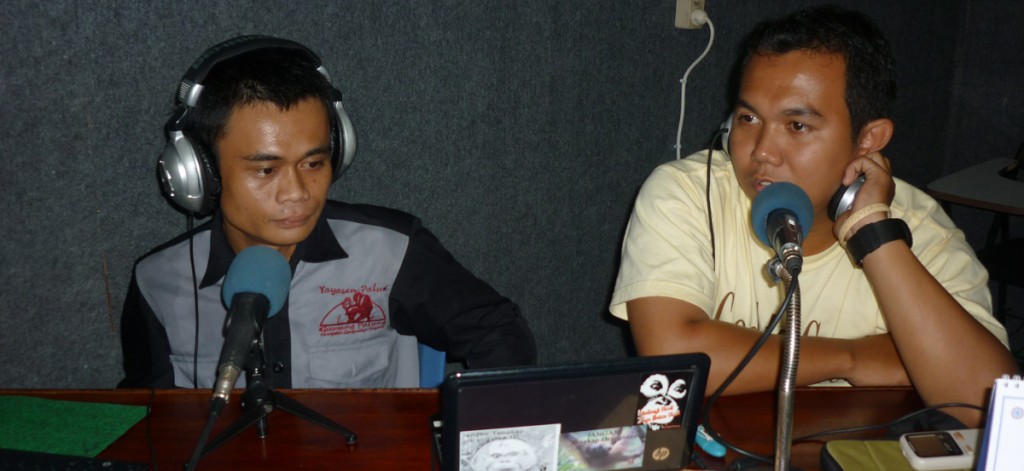
GPOCP Environmental Education staff member, Petrus Kanisius, and a guest share information about orangutan conservation with radio listeners.
The first of these was to institute a monthly theme for the radio show. Each month we produce eight hours of radio programming for our show Bincang Hijau (which translates roughly to “Green Discussion”), and so focusing on a single theme means that we can dive deep into the topic. In March, our theme was oil palm plantations, including the environmental and social impacts of agricultural expansion. In April, we will focus on mining. In addition to normal informational broadcasts, we also have at least one talk show with a government official or community leader per month. For example, this month we invited an official from the Ketapang Department of Agriculture to answer listener questions about oil palm expansion in the region. We have also added in twice monthly call-in shows and given people the opportunity to “text-in” (using SMS messages) to take feedback from our audience – making radio a more interactive communication medium. Finally, we are now working with International Animal Rescue to help them develop their radio program, and they run two of our eight shows per month, bringing a fresh perspective on orangutan conservation to GPOCP’s broadcasts.
